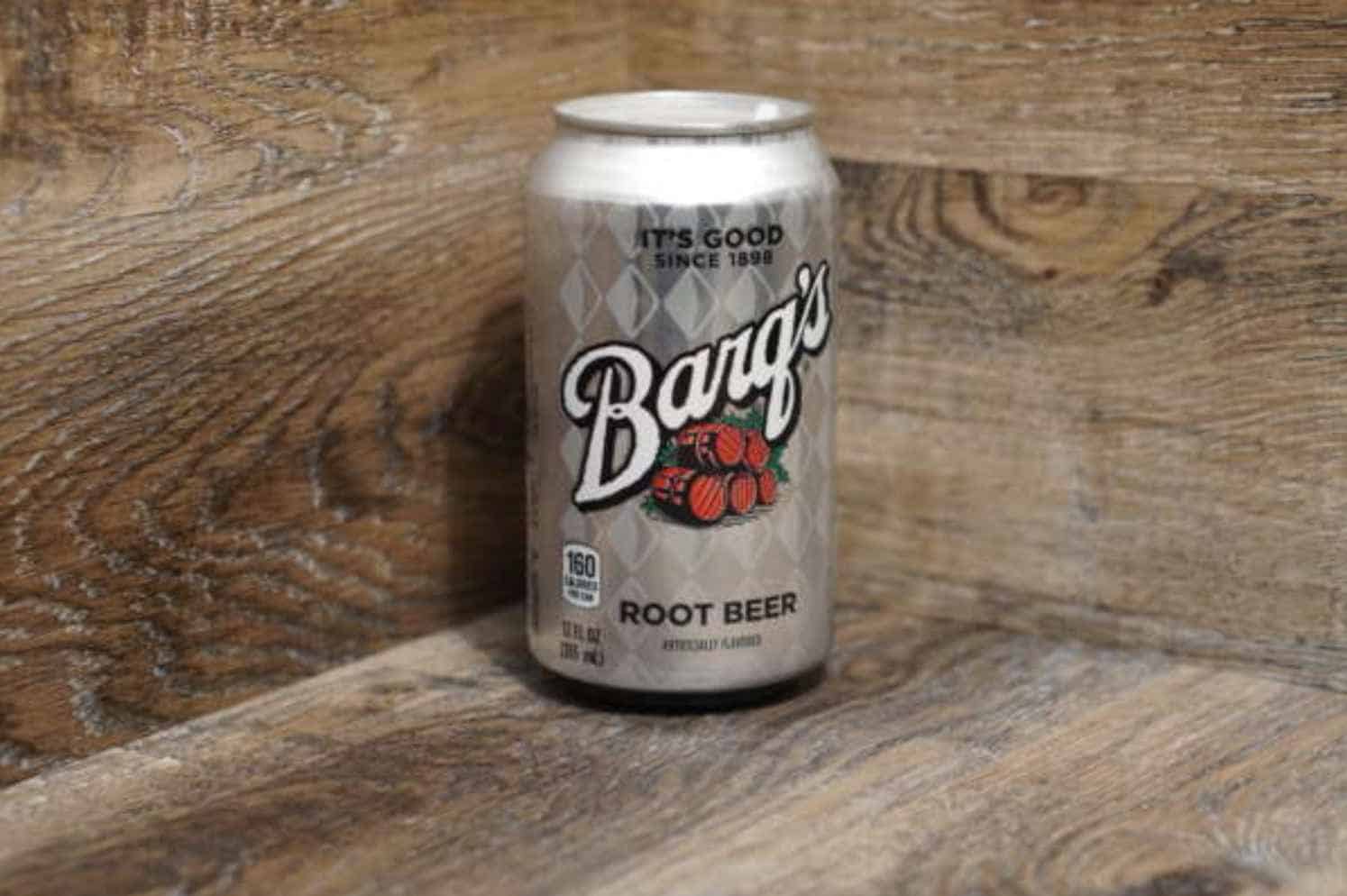Uncovering The Mystery: Why Do They Call It Root Beer?
Root beer is one of those nostalgic drinks that instantly takes you back to simpler times. But have you ever wondered why it's called "root beer"? It’s not like you see actual roots floating in the bottle, and it doesn’t taste like beer—at least not the alcoholic kind. So, what gives? This question has been bubbling in the minds of curious drinkers for decades. Let’s dive in and uncover the mystery behind this iconic beverage.
Root beer has been around for longer than you might think, with a history that dates back to the 19th century. Its unique name is tied to its origins and the ingredients used to create it. But don’t worry, we won’t leave you hanging with just the basics. This article will take you on a journey through time, exploring the roots (pun intended) of root beer, its evolution, and why it’s still a favorite today.
Whether you’re a fan of the classic soda or just curious about its quirky name, this article will give you all the answers you’ve been craving. So grab your favorite soda, sit back, and let’s explore the fascinating world of root beer together.
Read also:What Does Obsidian Kingdom Mean Unveiling The Mysteries Of The Name
What Exactly is Root Beer?
Root beer is more than just a fizzy drink. At its core, it’s a soda made from a blend of spices, herbs, and roots, with sassafras being the star ingredient. The name "root beer" comes from the combination of using roots as a primary flavoring agent and the brewing process, which is similar to making beer. But don’t worry—most modern root beers are non-alcoholic!
Here’s a quick breakdown of what makes root beer so special:
- It’s a carbonated beverage with a unique, spicy-sweet flavor.
- Traditionally, it’s made using sassafras root, wintergreen, licorice, vanilla, and other natural ingredients.
- Some versions are alcoholic, but most commercial root beers are non-alcoholic.
- It’s often associated with American culture and nostalgia.
The History Behind Root Beer
The story of root beer begins in the 1800s when herbal remedies were all the rage. People back then believed that certain roots and herbs had medicinal properties, and sassafras was one of them. Charles Hires, a pharmacist from Philadelphia, is credited with popularizing root beer as we know it today.
In 1876, Hires introduced his "Hires Root Beer" at the Philadelphia Centennial Exhibition. It was marketed as a healthy, non-alcoholic alternative to beer, and it quickly gained popularity. People loved the unique taste and the idea of drinking something that was both refreshing and good for you.
How Did Root Beer Get Its Name?
Now, let’s get to the heart of the matter. Why do they call it root beer? The name comes from two key factors:
- Root: The primary flavoring comes from roots, particularly sassafras root, which gives root beer its distinct taste.
- Beer: The brewing process is similar to making beer, even though most modern root beers don’t contain alcohol.
So, while it may sound like a strange combination, the name "root beer" makes perfect sense when you understand its origins. It’s a nod to the traditional brewing methods and the natural ingredients used in the recipe.
Read also:Alexis Bellino Net Worth 2023 A Deep Dive Into Her Wealth Career And Lifestyle
The Role of Sassafras in Root Beer
Sassafras is the unsung hero of root beer. This aromatic root was once the main ingredient in most root beer recipes, giving the drink its signature flavor. However, in the 1960s, the FDA banned sassafras oil due to concerns about its potential carcinogenic properties. This led to a shift in how root beer was made, with manufacturers turning to artificial flavorings to replicate the classic taste.
Despite this change, sassafras remains a symbol of root beer’s heritage. Some small-batch producers still use sassafras root in their recipes, but they do so carefully to comply with modern regulations.
Can You Still Find Sassafras Root Beer Today?
Yes, but it’s not as common as it used to be. Many craft soda makers are bringing back traditional recipes, using natural ingredients like sassafras root. If you’re a purist who wants to experience the original flavor, you might have to look a little harder—but it’s worth the effort!
Root Beer’s Popularity Over Time
Root beer has had its ups and downs over the years, but it’s always managed to stay relevant. In the early 20th century, it was one of the most popular sodas in America, thanks in part to Prohibition. During this time, people turned to non-alcoholic beverages like root beer as a substitute for beer.
Today, root beer is still a beloved classic, though it faces stiff competition from newer, trendier sodas. But its rich history and nostalgic appeal keep it firmly rooted in American culture.
Why Do People Love Root Beer?
There’s something about root beer that resonates with people. Maybe it’s the comforting, familiar taste that reminds them of childhood summers or family gatherings. Or maybe it’s the unique flavor profile that sets it apart from other sodas. Whatever the reason, root beer has a loyal fan base that spans generations.
Root Beer Floats: A Classic Combination
No discussion of root beer would be complete without mentioning root beer floats. This simple yet delicious dessert combines root beer with vanilla ice cream, creating a creamy, fizzy treat that’s hard to resist. The invention of the root beer float is often credited to Frank J. Wisner, who came up with the idea in the late 1800s.
Here’s how to make your own root beer float:
- Pour a cold glass of your favorite root beer into a tall glass.
- Scoop in a generous amount of vanilla ice cream.
- Watch as the ice cream melts into the soda, creating a frothy, creamy mixture.
- Enjoy immediately for the best experience!
What Makes Root Beer Floats So Special?
The combination of cold soda and creamy ice cream is pure magic. The carbonation from the root beer creates a fizzy texture, while the ice cream adds richness and sweetness. It’s a perfect balance of flavors and textures that makes root beer floats a timeless classic.
Root Beer Around the World
While root beer is most closely associated with the United States, it has fans all over the world. In Canada, root beer is a popular choice at fast-food chains and family restaurants. In Europe, it’s gaining traction as part of the growing craft soda movement. Even in Asia, some companies are experimenting with root beer-inspired flavors.
Interestingly, root beer’s popularity varies depending on the region. In some places, it’s seen as a novelty, while in others, it’s a staple beverage. This global appeal speaks to the universal appeal of its unique flavor.
How Does Root Beer Compare to Other Sodas?
Root beer stands out from other sodas because of its complex flavor profile. Unlike colas, which tend to be sweet and simple, root beer has a more nuanced taste that combines sweetness, spice, and a hint of earthiness. This makes it a great choice for people who want something a little different from the usual soda offerings.
Health Implications of Root Beer
While root beer is often marketed as a healthier alternative to beer, it’s important to remember that it’s still a soda. Most commercial root beers are high in sugar and calories, so they should be consumed in moderation. However, there are some healthier options available, including sugar-free and organic versions.
For those interested in the original medicinal properties of root beer, you might want to look into herbal teas or tisanes that use sassafras and other natural ingredients. These can provide similar health benefits without the added sugar.
Is Root Beer Good for You?
In moderation, root beer can be a fun and tasty treat. However, it’s not a health drink, and it shouldn’t be consumed in large quantities. If you’re looking for a healthier soda option, consider trying sparkling water with natural flavorings or herbal sodas made with stevia.
Fun Facts About Root Beer
Here are a few fun facts about root beer that you might not know:
- Root beer was originally sold as a syrup that could be mixed with carbonated water at soda fountains.
- The first root beer was marketed as a "temperance drink," encouraging people to choose it over alcoholic beverages.
- There are over 100 different brands of root beer available in the United States alone.
- Some root beers are still made using traditional brewing methods, similar to beer production.
Did You Know?
Root beer isn’t just for drinking! It’s also used in cooking and baking, adding a unique flavor to recipes like marinades, sauces, and desserts. So if you’re feeling adventurous in the kitchen, why not try incorporating root beer into your next meal?
Conclusion: Why Do They Call It Root Beer?
In conclusion, the name "root beer" is a reflection of its origins and ingredients. It’s a nod to the roots used in its production and the brewing process that gives it its name. Root beer has a rich history and a loyal following, making it a timeless favorite for soda lovers everywhere.
So the next time you enjoy a cold glass of root beer, take a moment to appreciate its unique flavor and fascinating backstory. And don’t forget to share this article with your friends and family—after all, who doesn’t love a good root beer story?
Table of Contents
- What Exactly is Root Beer?
- The History Behind Root Beer
- The Role of Sassafras in Root Beer
- Root Beer’s Popularity Over Time
- Root Beer Floats: A Classic Combination
- Root Beer Around the World
- Health Implications of Root Beer
- Fun Facts About Root Beer
- Conclusion: Why Do They Call It Root Beer?


